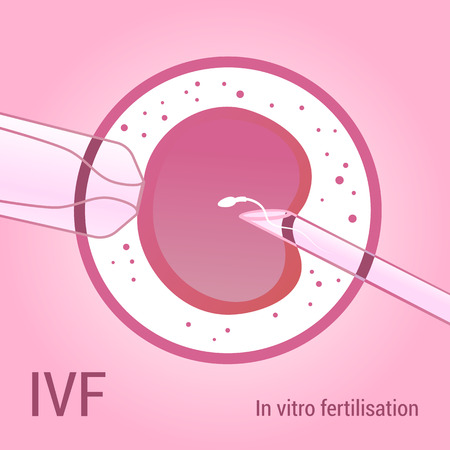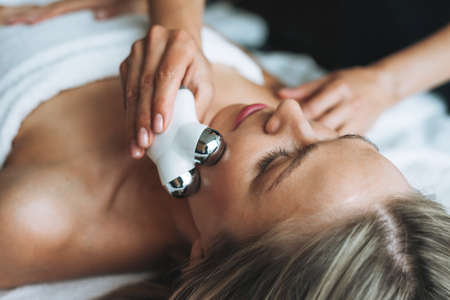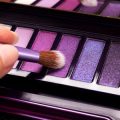Introduction to Microcurrent Devices and Their Benefits
Microcurrent devices have become increasingly popular across the UK as a gentle yet effective addition to daily skincare routines. These handheld tools use low-level electrical currents to stimulate the skin and underlying facial muscles, mimicking the body’s own natural processes. The result is a subtle lifting, toning, and rejuvenation of the complexion—perfect for those seeking non-invasive skincare solutions. In the context of British climate, which can often be damp and unpredictable, microcurrent devices help support skin resilience by improving circulation and encouraging collagen production. As many in the UK lead busy lives with exposure to urban pollution and fluctuating weather, integrating microcurrent technology offers a modern approach to maintaining healthy, radiant skin. This introduction will guide you through understanding what microcurrent devices are, how they work, and why they may be particularly beneficial for those living in Britain.
2. Choosing the Right Microcurrent Device for Your Needs
When it comes to incorporating microcurrent devices into your daily skincare routine in the UK, selecting the right device is crucial for both safety and efficacy. With a variety of options available on the market, it’s essential to consider not only your unique skin concerns but also ensure that the device meets UK regulatory standards and is sourced from reputable British retailers.
Understanding UK Regulatory Standards
In the UK, microcurrent devices are classified as electrical beauty equipment and must comply with specific safety standards set by organisations such as the Medicines and Healthcare products Regulatory Agency (MHRA) and be CE marked. Always check for certification before making a purchase, as this ensures the device has undergone rigorous testing for consumer safety.
Factors to Consider When Choosing a Microcurrent Device
| Consideration | Details |
|---|---|
| Skin Type & Concerns | Select a device tailored to your goals, whether lifting, firming, or targeting fine lines. |
| Intensity Settings | Opt for adjustable intensity levels to customise treatment according to sensitivity. |
| Portability & Design | Choose a device that fits comfortably in your hand and is easy to manoeuvre, especially for use at home or while travelling. |
| Battery Life & Charging | Look for reliable battery performance; many quality models are USB rechargeable. |
| Warranty & Aftercare Support | Trustworthy brands offer warranties and access to customer support within the UK. |
| UK Retailer Credibility | Purchase from established British retailers or official brand websites to guarantee authenticity and adherence to local regulations. |
Trusted British Retailers to Consider
If you’re unsure where to begin, popular UK retailers like John Lewis, Boots, Cult Beauty, and Lookfantastic stock a curated selection of certified microcurrent devices. Shopping through these outlets not only assures product authenticity but also provides access to local customer service and returns policies.
A Note on Professional Advice
If you have underlying skin conditions or are currently under dermatological care, it’s advisable to consult with a skincare professional or GP before introducing any new electrical device into your routine. This extra step helps safeguard your skin health while maximising the benefits of microcurrent technology.

3. Prepping Your Skin for Microcurrent Treatment
Before introducing a microcurrent device into your daily skincare routine, proper skin preparation is absolutely essential—especially here in the UK, where unpredictable weather and pollution can impact skin health. Cleansing is the crucial first step. Opt for a gentle, non-stripping cleanser that suits your skin type and addresses local concerns like sensitivity or dryness caused by colder climates. British favourites such as cream-based cleansers or micellar waters are perfect for effectively removing impurities without disturbing the skin’s natural barrier.
After cleansing, it’s important to ensure your skin is completely free from makeup, sunscreen, and any residual oils. This allows the microcurrent device to deliver optimal results and prevents potential irritation. Many in the UK turn to nourishing toners with soothing ingredients like rose water or chamomile, which calm the skin and replenish hydration lost during cleansing. These toners also help balance the skin’s pH, creating an ideal canvas for microcurrent therapy.
For an extra layer of care, consider incorporating a lightweight, hydrating serum—look for formulas featuring hyaluronic acid or vitamin B5, both of which are loved in British skincare routines for their ability to boost moisture levels without feeling heavy. Always allow each product to absorb fully before moving on to your microcurrent treatment. By thoroughly prepping your skin with these gentle, UK-approved products, you’ll maximise the benefits of your device while supporting overall skin health and resilience.
4. Steps to Incorporate Microcurrent into Your Daily Regimen
Integrating a microcurrent device into your daily skincare routine can be wonderfully straightforward, especially when you follow a step-by-step approach tailored for British lifestyles. Whether you’re preparing for a busy day or winding down in the evening, microcurrent therapy fits seamlessly into both morning and nighttime routines. Below is a simple guide to help you layer your products correctly and make the most of your device for radiant, healthy-looking skin.
Step-by-Step Routine for Morning and Evening
| Step | Morning Routine | Evening Routine |
|---|---|---|
| 1. Cleanse | Use a gentle cleanser suitable for UK climates to remove overnight build-up. | Double cleanse to remove makeup, SPF, and daily pollutants. |
| 2. Tone | Apply an alcohol-free toner to balance skin’s pH and prep for treatment. | Use a hydrating toner to soothe and refresh after cleansing. |
| 3. Microcurrent Device | On clean, dry skin, apply the recommended conductive gel, then use the device as per instructions (usually 5-10 minutes). | Repeat application with conductive gel; use device focusing on areas needing extra care after a long day. |
| 4. Serum | Select a lightweight serum such as Vitamin C for antioxidant protection against urban stressors. | Opt for serums with ingredients like hyaluronic acid or peptides for overnight repair. |
| 5. Moisturiser | Choose a hydrating but non-greasy moisturiser suitable for UK weather fluctuations. | Apply a richer cream if your skin tends to feel tight after cleansing or in colder months. |
| 6. SPF / Night Cream | Finish with broad-spectrum SPF—even on cloudy British days—to protect from UV rays. | If desired, add a nourishing night cream or facial oil to lock in moisture while you sleep. |
Tips for Seamless Integration
- Simplicity is key: Don’t overload your routine—microcurrent works best on freshly cleansed skin before applying heavy creams or oils.
- Bespoke scheduling: Some prefer morning use for an instant lift, while others find evening sessions relaxing—choose what suits your lifestyle best.
- Consistency matters: For visible results, aim to use your microcurrent device at least 3-5 times per week as part of your regular regimen.
- Cultural consideration: During British winters, focus on hydration before and after microcurrent use to combat dryness from central heating and cold air.
Your Skincare Ritual, Upgraded
The beauty of adding microcurrent therapy lies in its ability to enhance your existing routine without disruption. With just a few minutes each day, you can experience professional-level benefits from the comfort of your home—perfectly suited to the busy yet mindful pace of life in the UK.
5. Safety Tips and Best Practices for the UK
When introducing microcurrent devices into your daily skincare routine in the UK, its essential to prioritise safety and follow best practices tailored to local needs. The cool and often damp British climate can lead to increased skin sensitivity, so adopting a gentle approach is key. Always start by reading the manufacturer’s instructions carefully—many UK-regulated devices are compliant with CE marking standards, ensuring quality and safety. Before each use, check your device for any visible damage or wear, as faulty equipment can compromise results or even harm your skin.
Patch Testing and Sensitive Skin Considerations
If you have sensitive skin—a common concern in cooler climates—perform a patch test behind your ear or on your inner arm before using the device on your face. This step helps you gauge how your skin might react to the microcurrent without risking irritation on more delicate facial areas. For those prone to rosacea or eczema, consult with a dermatologist before integrating new technologies into your regime.
Device Maintenance and Hygiene
Maintaining impeccable hygiene is crucial. Clean both your device and hands thoroughly before and after each session to prevent bacteria transfer, especially during cold seasons when skin barriers may be compromised. Use only approved cleansers recommended by the device manufacturer—harsh chemicals can degrade device components and irritate skin. Store your device in a dry, cool place away from direct sunlight, as British weather can fluctuate rapidly, impacting electronic longevity.
Adhering to Usage Guidelines
Stick to recommended usage times—usually five to twenty minutes per session—and avoid overuse, which can overstimulate sensitive British complexions. Never use microcurrent devices over broken or inflamed skin, and refrain from treatments if you have metal implants such as pacemakers or are pregnant, in line with NHS advice. Finally, always apply a conductive gel as directed; this not only enhances efficacy but also protects your skin from potential discomfort.
By following these UK-specific safety tips and best practices, you’ll nurture your complexion while enjoying the restorative benefits of microcurrent technology—even amidst Britain’s famously unpredictable weather.
6. Maximising Results: Complementary Skincare Products
To achieve the best results from your microcurrent device, pairing it with well-chosen skincare products is essential. In the UK, where climate and environmental factors can impact the skin’s barrier, local favourites offer gentle yet effective support for your complexion. After using a microcurrent device, the skin is often more receptive to active ingredients, making this an ideal time to apply high-quality serums and creams.
Soothing Serums: Look for lightweight, hydrating serums rich in hyaluronic acid or niacinamide—both popular amongst British skincare enthusiasts. Brands like Medik8 and REN Clean Skincare offer formulas that calm sensitivity and replenish moisture without leaving a sticky residue. These serums help soothe post-treatment skin and enhance the lifting effect of microcurrent therapy.
Barrier Creams: With the UK’s variable weather, strengthening your skin’s natural barrier is crucial. Opt for barrier-repair creams containing ceramides or squalane from trusted local brands such as CeraVe or E45. These creams lock in hydration and protect against environmental stressors, supporting long-term skin health alongside your daily microcurrent sessions.
SPF Protection: Even on overcast days, UV rays can affect skin integrity. Finish your routine with a broad-spectrum SPF suitable for all skin types—brands like La Roche-Posay and No7 are widely recommended by British dermatologists.
By combining microcurrent therapy with these time-tested British skincare staples, you create a harmonious regimen that nurtures and fortifies your complexion—helping you reveal radiant, resilient skin every day.
7. Sustaining Long-Term Skin Health
Maintaining healthy, radiant skin is not just about short-term results but establishing habits that support your complexion for years to come. To truly benefit from microcurrent devices, consistency is key—aim to incorporate treatments into your routine several times per week, following the manufacturer’s guidance or the advice of a skincare professional. Setting reminders on your phone or aligning sessions with existing daily rituals, such as after your evening cleanse, can help make this new habit stick.
Beyond the device itself, holistic lifestyle choices play a vital role in supporting skin health. The UK’s love for outdoor activities, from countryside walks to city park jogs, offers an excellent opportunity to boost circulation and oxygenate the skin—just remember to apply SPF if you’re heading out during daylight hours. Regular hydration is also essential; many Brits favour herbal teas, which can be both soothing and beneficial for the skin due to their antioxidant properties.
Balanced nutrition contributes greatly to a glowing complexion. Traditional British staples like salmon, oats, and berries provide essential fatty acids and vitamins that nourish the skin from within. Moreover, prioritising quality sleep—a cornerstone of wellbeing widely valued in the UK—allows your skin time to repair and regenerate overnight.
Finally, stress management is crucial for long-term skin health. Mindfulness practices such as yoga or meditation are increasingly popular across Britain and can help keep cortisol levels in check, reducing inflammation and supporting overall skin repair. By integrating microcurrent treatments with these holistic habits, you create a sustainable routine that not only addresses immediate concerns but fosters healthy skin for the future.


